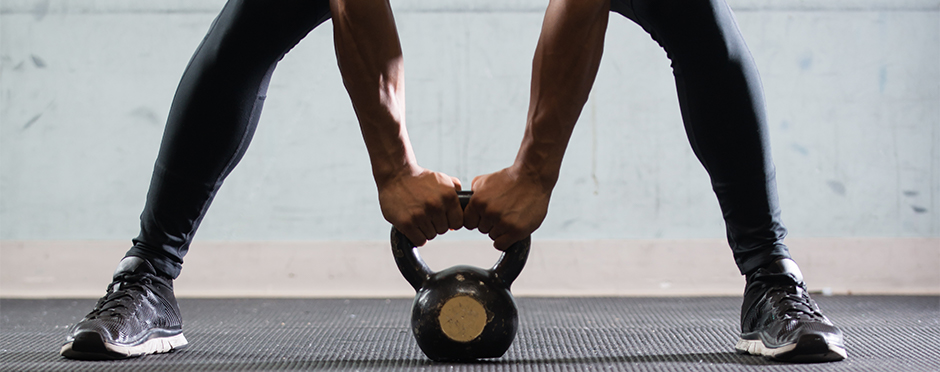
Stronger than Yesterday: The Deadlift
1 CommentImproved daily function is one of the main benefits of exercise. Becoming stronger by participating is strength training is an example of the body working to reach a higher level of ability. Strength goes beyond the gym, seeping into everyday life. Becoming stronger also helps you to become more capable to do the things you love to do!
Although deadlifting can seem like an intimidating movement, it is not an exercise reserved for body builders and athletes alone. In truth, this is a movement that most individuals can practice as a safe option to build total body strength! Due to the amount of muscles engaged in the deadlift, this exercise has the potential to build lower body, core and upper body strength when done safely and correctly.
Adding resistance in the form of barbells, dumbbells, ropes or bands to any movement allows the body to build greater strength. Before adding resistance to the movement, it is recommended practicing it as a bodyweight exercise to ensure you are doing it correctly. An important safety tip with any exercise is to practice the exercise first, with little to no resistance to ensure proper movement. This prevents potential injury and allows your body the opportunity to become acquainted with the movement!
How to Perform the Deadlift:
 The deadlift is a form of a hinge, which is another valuable movement in a strength training repertoire. Imagine the hip joint as one large hinge. Bending forward opens the joint angle and standing up locks it back into place. Gravity and everyday life ask the body to bend over to pick up things like laundry or shoes. Learning how to hinge properly not only prevents injury to the back, but it also allows for the development of the hamstrings and muscles of the back.
The deadlift is a form of a hinge, which is another valuable movement in a strength training repertoire. Imagine the hip joint as one large hinge. Bending forward opens the joint angle and standing up locks it back into place. Gravity and everyday life ask the body to bend over to pick up things like laundry or shoes. Learning how to hinge properly not only prevents injury to the back, but it also allows for the development of the hamstrings and muscles of the back.
The following directions will provide a step-by-step guide of cues to consider when practicing a deadlift:
- Begin this exercise by standing up tall, it is important to keep the legs and core braced
- The positioning of the foot will depend on the style of deadlift, however a good rule of thumb is hips distance apart
- Refrain from bending through the spine as you begin to lean the chest forward
- As the chest leads forward, start to unlock the hips
- Keep the back at a neutral angle and push the hips backward
- As the hips go back, the chest will come forward and the knees will bend slightly
- Hinge about halfway, until the chest is parallel to the ground
- Reverse these movements to lift out of the deadlift, then press the hips forward and lift the chest
- Squeeze the glutes, core, and back as you lift the chest and press the hips forward into the locked position1
- If you have access to a belt, strap or PVC pipe, they can be used as a tool to practice form
Benefits Associated with the Deadlift:
The deadlift helps develops muscles of the thigh, hips, buttocks, lower and upper back. The amount of muscles used in this exercise increases the value of the deadlift and improves daily movements like running, walking, pushing, jumping and pulling.2 Deadlifting will allow the body to work more efficiently as strength develops by:
- Increasing metabolic functioning as it requires the use of multiple muscle groups
- Improving balance and coordination that can reduce the risk of falling
- Building greater grip strength, supporting your upper body
- Reducing injury by encouraging joints, tendons and muscles to grow
- Better overall movement abilities due to stronger muscles3
Examples of the hinge include:
- Kettlebell deadlift
- Barbell deadlift
- Dumbbell deadlift
- Kettlebell swing
Stronger than Yesterday
To learn more about strength training, make sure to check out the rest of the blogs in Athletico’s “Stronger than Yesterday” series. If you experience any unusual aches and pains after starting a strength training regimen, click the button below to schedule a complimentary injury screening at an Athletico location near you.
The Athletico blog is an educational resource written by Athletico employees. Athletico bloggers are licensed professionals who abide by the code of ethics outlined by their respective professional associations. The content published in blog posts represents the opinion of the individual author based on their expertise and experience. The content provided in this blog is for informational purposes only, does not constitute medical advice and should not be relied on for making personal health decisions.
References:
1. Hogan, Michelle Kennedy. ” 10 Benefits of Deadlifts You Probably Never Knew.” n.d. Lifehack.org. 5 January 2017. <https://www.lifehack.org/articles/lifestyle/benefits-deadlifts-you-probably-never-knew.html>.
2. Lavallee, Mark & Mansfield, Linda. “Weightlifting Training Gives Lifelong Benefits.” ACSM’s Health & Fitness Journal (2013): 34-36.
3. Rippetoe, Mark. Starting Strength Basic Barbell Training 3rd Edition. Wichitaw Falls: The Aasgaard Company, 2011.

1 Comment
Adrian
I completely agree that strength training has numerous benefits beyond the gym and that the deadlift is a valuable movement to add to any strength training routine. It engages multiple muscle groups, improves posture, and can even prevent injury. Practicing proper form with little to no resistance is crucial, and adding resistance over time can help build greater strength.